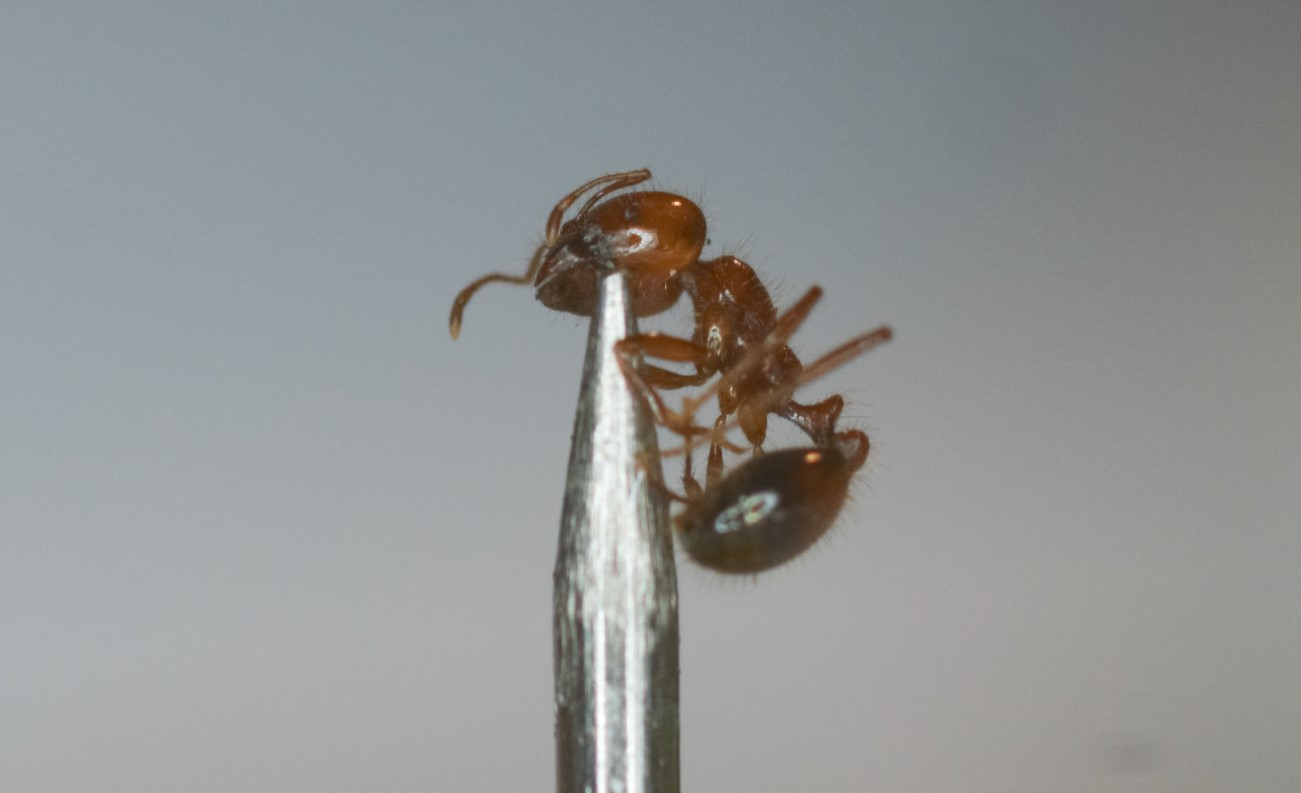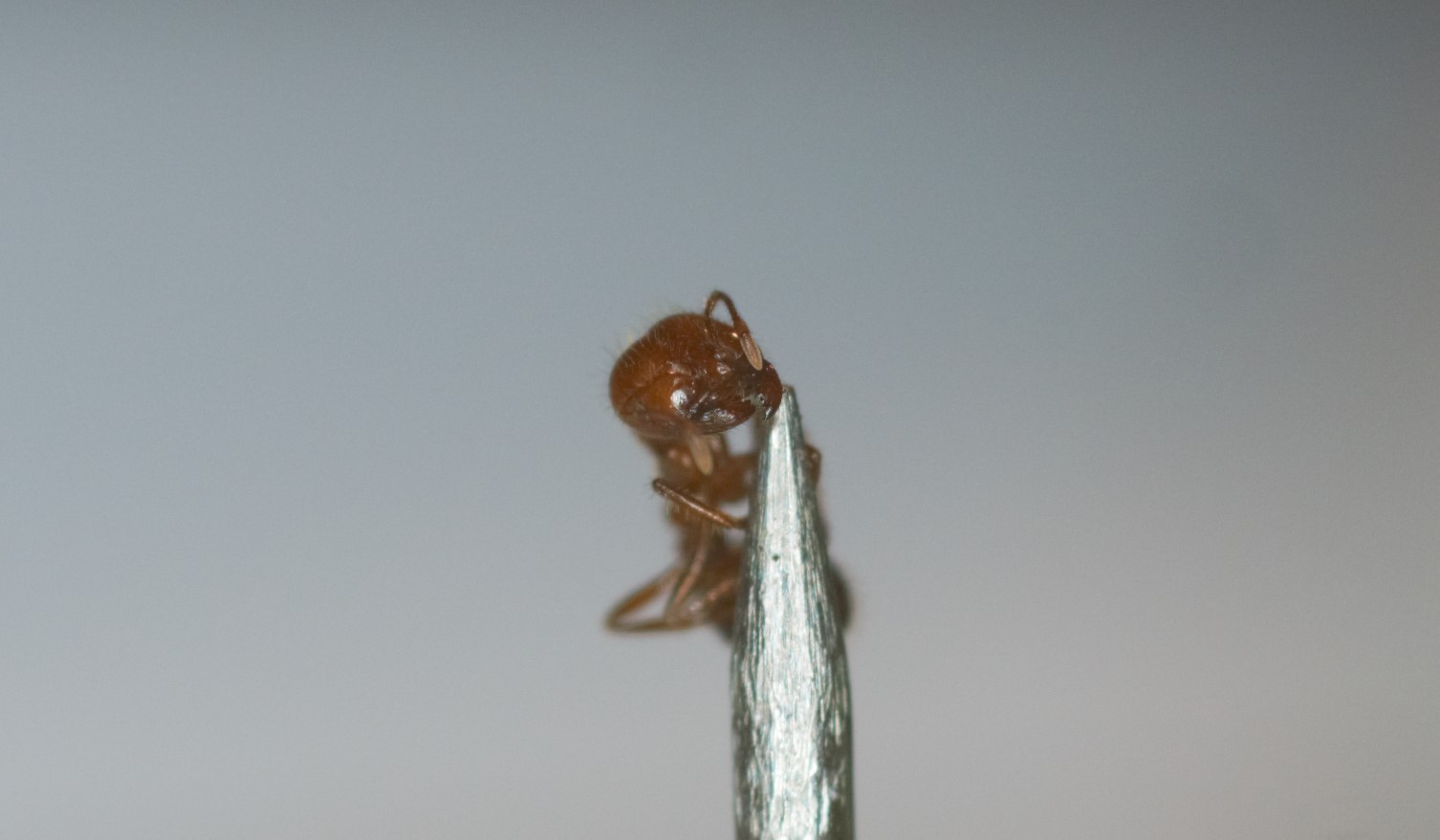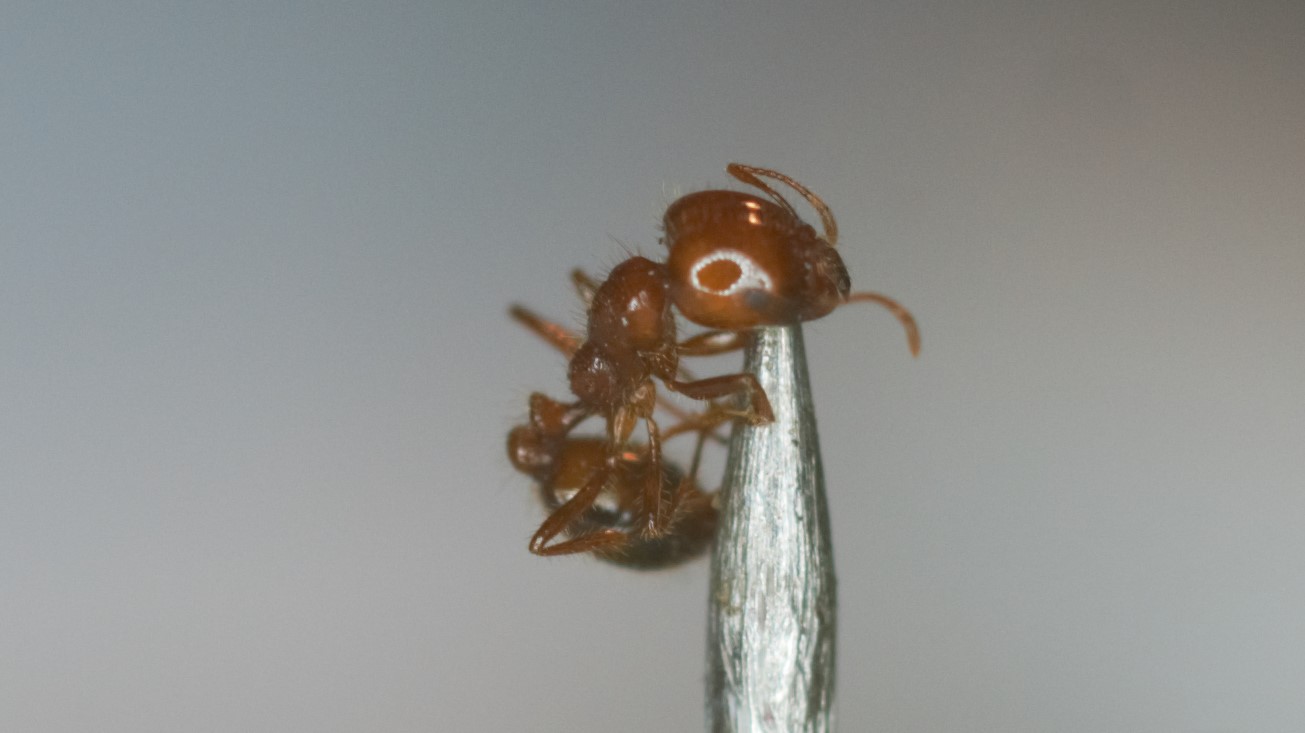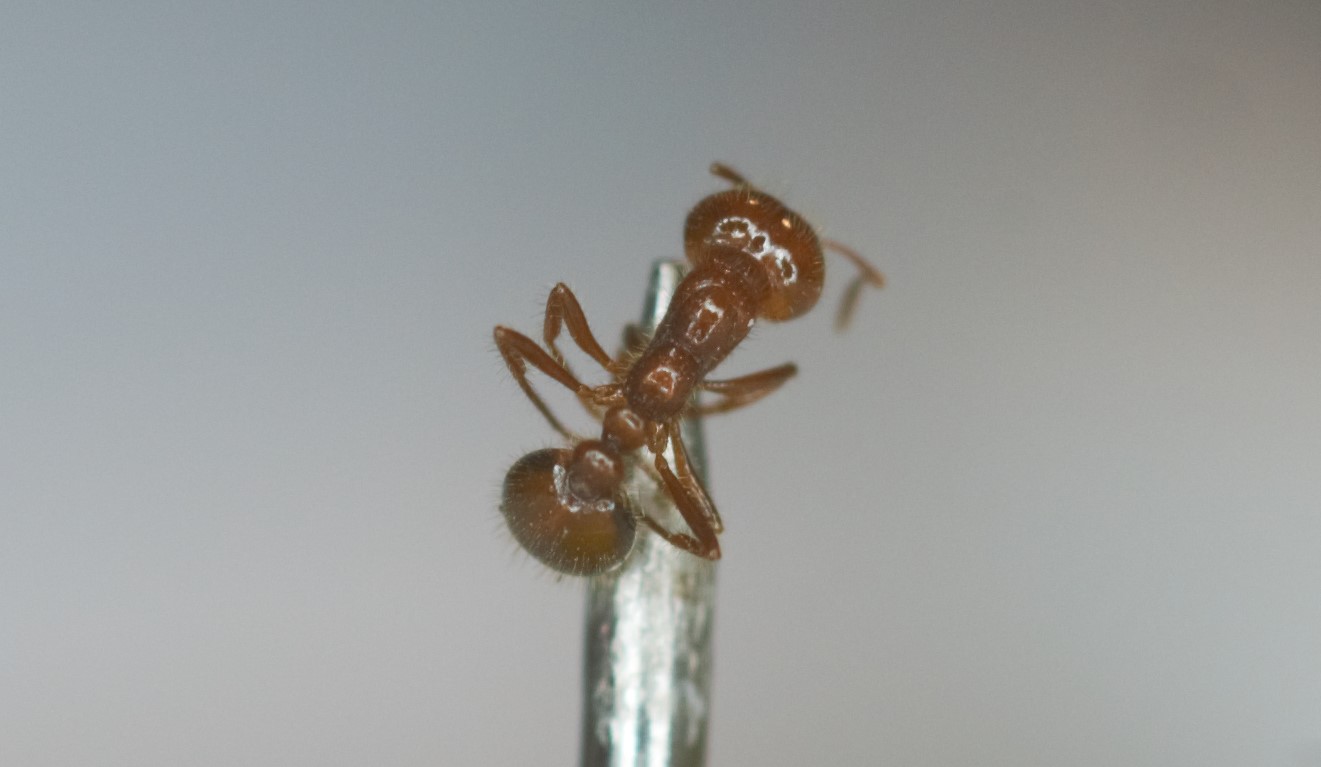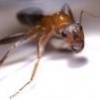1. Location of collection: Burbank, CA hillside in a public park (Cabrini Park)
2. Date of collection: 6/28/2015 9am
3. Habitat of collection: soil/grass foorhills
4. Length (from head to gaster): 4mm
5. Color, hue, pattern and texture: Amber with darker gaster
6. Distinguishing characteristics: Postpetiole. Spiky hairs throughout.
7. Anything else distinctive: Kind of a big head. This is a major, minors were seen also approximately half this size. Pheidole?
8. Nest description: nondescript hole in moist soil of barren area on a grassy slope.
Some pics
